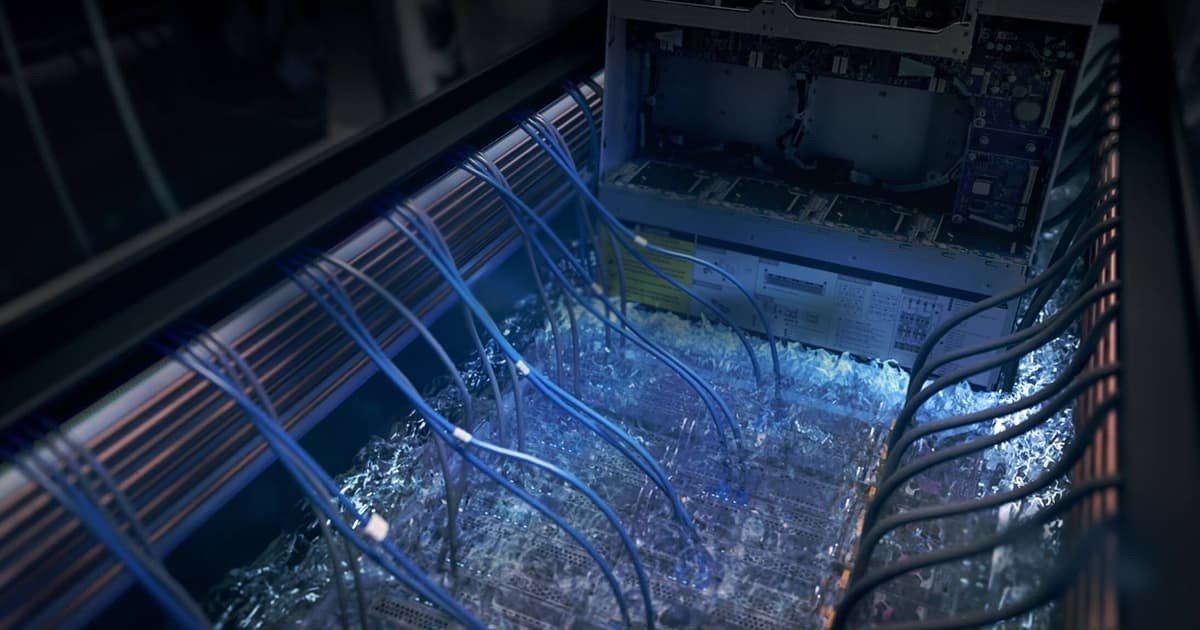🧊 One Air to Cool them All
Just like in The Lord of the Rings, there’s an engineering marvel that fascinates us all: Cooling.
And there are (many) different Precision Cooling formats: backpack, in-row, perimeter… which one to choose?
The growth of data centers has brought a technical challenge: keeping them cool, always, without failures. Cooling is no longer a simple task, especially when dealing with increasingly concentrated thermal loads per square meter.
The good news is that there isn’t a single solution. There are multiple precision cooling system formats, each with its advantages, limitations, and ideal scenarios.
🌡 What does ASHRAE say?
Before diving into the formats, it’s important to understand the regulatory framework. ASHRAE (American Society of Heating, Refrigerating and Air-Conditioning Engineers) is the global reference in technical climate control.
ASHRAE publishes the standard Thermal Guidelines for Data Processing Environments (TC 9.9), which defines thermal classes (A1, A2, A3, A4). These classes indicate the recommended temperature and humidity ranges for IT equipment, depending on their thermal tolerance.
For example:
- Class A1: 15–32 °C, 20–80% RH
- Class A2: up to 35 °C
- Class A4: up to 45 °C (only for compatible equipment)
Most current equipment can tolerate higher temperatures, but precise air control remains essential to avoid failures, condensation, or hotspots.
🏗 Design Standards: TIA-942 and Uptime Institute
The TIA-942 standard (Telecommunications Infrastructure Standard for Data Centers) defines the physical design of a data center, including the use of cold and hot aisles, types of ductwork, and raised floor classification as an air distribution zone.
The Uptime Institute, on the other hand, sets reliability levels (Tier I to IV). At higher levels (Tier III or IV), N+1 or 2N redundancy is required in cooling, which also influences the type of systems selected.
🔧 Types of Precision Cooling Formats
Next, I’ll explain the most commonly used formats, when each is suitable, and which brands manufacture them.
🟦 1. Perimeter Units (Traditional CRAC or CRAH)
What are they?
Units placed around the room (perimeter) that blow cold air into the cold aisle, usually from the raised floor.
Types:
- CRAC: With compressor and direct expansion (DX).
- CRAH: With chilled water, they use coils connected to chillers.
Advantages:
- Reliable and robust
- Easy maintenance
- Compatible with ductwork or raised floor
Disadvantages:
- Lower efficiency in high-density environments
- Dependence on room design
Brands:
Vertiv (Liebert PDX), Stulz CyberAir, Schneider Uniflair
Relevant standards:
TIA-942 recommends raised floors of at least 30 cm if air is distributed underneath.
🟩 2. In-Row (InRow)
They are placed directly between the racks. They take in hot air from the hot aisle and return cold air to the cold aisle.
How it works:
They can be DX, chilled water, or hybrid systems.
Advantages:
- Highly efficient in high-density environments (>10 kW per rack).
- Localized cooling
- Easy modular expansion
Disadvantages:
- Lower capacity per unit
- Requires careful airflow design
Brands:
- Schneider/APC InRow RC, RD
- Vertiv CRV
- Stulz CyberRow
Relevant standards:
ASHRAE TC 9.9 recommends this type for high-density clusters.
🟨 3. Backpack (Rear Door Heat Exchangers or In-Rack Cooling)
What are they?
Units installed on the rear door of the racks. They function as a heat exchanger that cools the hot air as it exits.
Types:
- Passive: they do not have fans
- Active: they incorporate fans to improve heat transfer
Advantages:
- High efficiency
- They eliminate the mixing of cold and hot air.
- Compact and discreet
Disadvantages:
- Requires hydraulic planning (water or refrigerant)
- Not all racks are compatible
Brands:
Rittal LCP, Vertiv DCL, Huawei iCooling
Standards:
Highly aligned with aisle containment strategies, promoted by ASHRAE and the Uptime Institute.
🟧 4. Overhead (mounted on the ceiling or within the drop ceiling)
What are they?
Systems installed in the IT areathat distribute air through ducts or freely into the cold aisles.
Advantages:
- Frees up floor space
- Useful where there is no raised floor
- Easy integration with existing ductwork
Disadvantages:
- More difficult to maintain
- Require precise distribution calculation
Brands:
Vertiv CW overhead, Stulz TopCool, Schneider
📐 How to Choose the Right Format?
There is no single answer. Here are some key points:
| Criterion | Recommendation |
|---|---|
| High rack density | InRow or Backpack |
| Small data center or no raised floor | Overhead o InRow |
| Traditional centers with space | Perimeter |
| Need for energy efficiency | Rear Door or InRow |
| Tier III or IV redundancy | Combination with CRAH and Chillers |
ASHRAE and Uptime recommend thermal evaluations using CFD (Computational Fluid Dynamics) airflow modeling to validate any design before implementation.
🔚 Conclusion
Precision cooling is as critical as power supply. Choosing the right format not only protects your servers but also saves energy, extends equipment lifespan, and improves availability.
Remember: it’s not about cooling more, but cooling better. By following ASHRAE guidelines and the best practices from TIA and Uptime, you can design an efficient, scalable, and reliable system.



